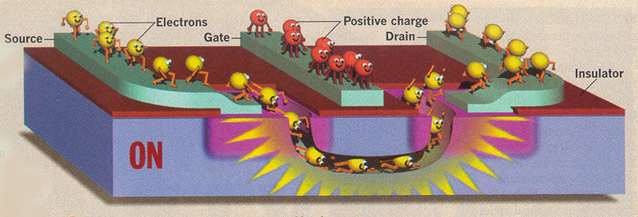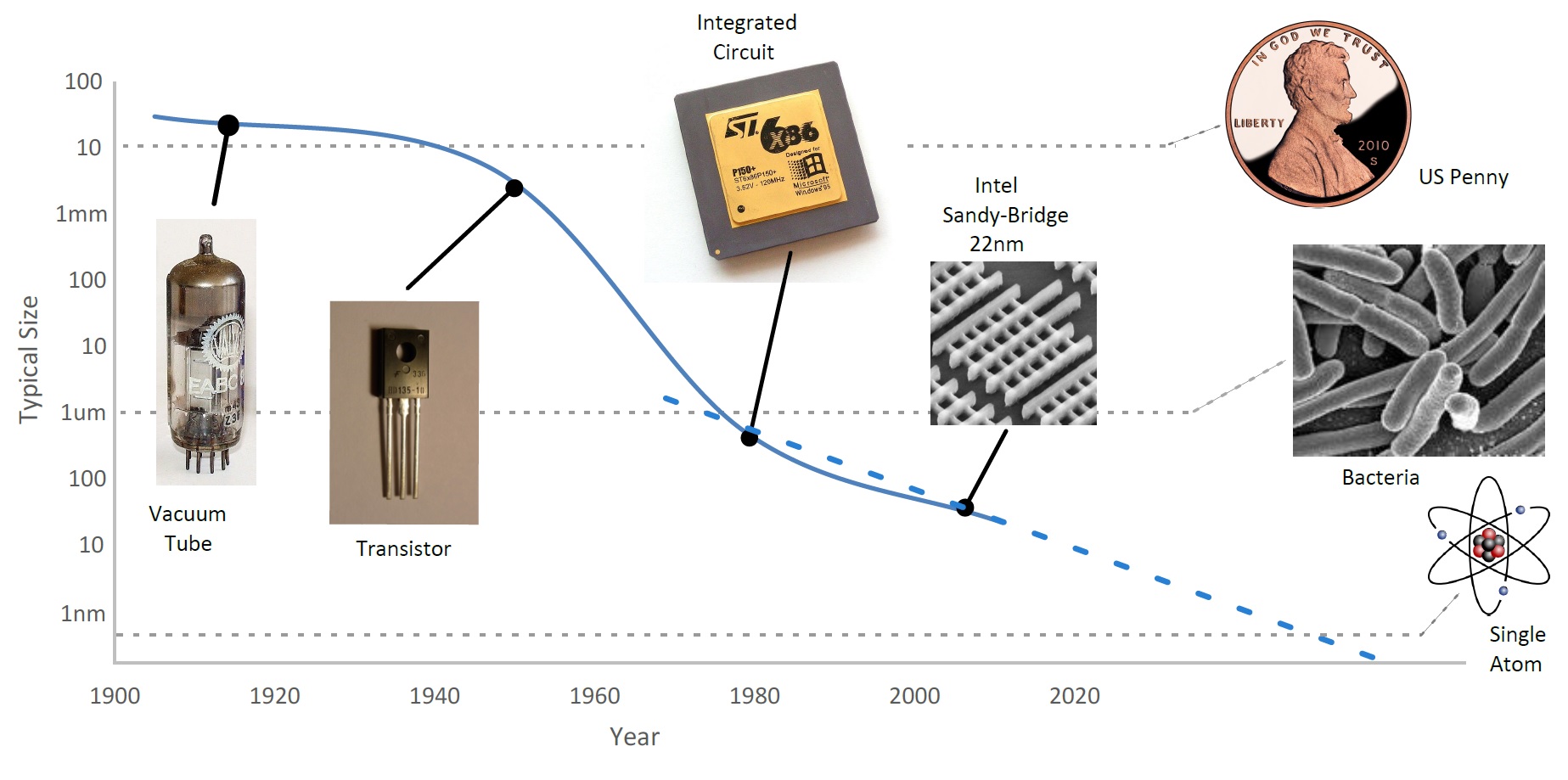|
EHB
222E Introduction to Electronics (CRN: 21124) Grading: Midterm Exams 2x 30%, Final Exam 40%
I
created a Ninova
page for
your section. You can access it using your ITU student
account and password. |
||||||||||||||||||||||||||||||
|
Önkoşullar/Prerequisites
|
Resmi
olarak ne yazık ki YOK, ancak Elektrik/Elektronik
bilgisi içeren FIZ102(E) gibi bir temel Fizik dersi
İçeriği:
Coulomb yasası ve elektrik alanı. Gauss yasası. Elektrik potansiyeli. Sığa,
elektrik enerjisi ve yalıtkanların özellikleri. Akım ve direnç. DA
devrelerinde enerji ve akım. Manyetik alan manyetik alan kaynakları. Faraday
yasası. indüklem. madde içindeki manyetik alanlar. elektromanyetik salınımlar
ve AA devreleri. Maxwell denklemleri ve elektromanyetik dalgalar.
veya
EHB211(E) dersini
İçeriği:
Fiziksel devreler. Fiziksel devrelerde akım ve gerilimin ölçülmesi ve
modellenmesi. Yük, akı, güç ve enerji fonksiyonlarının tanımı ve dalga
biçimlerinin modellenmesi. Kirchhoff yasaları: Akım ve gerilim denklemleri.
Yük ve akı bağıntıları. Devre grafları. Graf matrisleri. İdeal devre
elemanları. Fiziksel devre elemanlarının modellenmesi. Lineer olmayan devre
elemanlarının küçük işaret modelleri. Elektrik devrelerinin
sınıflandırılması. Lineer ve lineer olmayan direnç devrelerinin incelenmesi.
Çevre akımları ve düğüm gerilimleri yöntemleri. Çarpımsallık, toplamsallık,
resiprosite, Thevenin ve Norton teoremleri. Dinamik devrelerin incelenmesi:
Durum değişkenleri yöntemi. Birinci ve ikinci mertebeden dinamik devrelerin
çözümü.
almış
ve her ikisinden de en az DD ile geçmiş olmak
dersi kaybolmadan izlemek açısından ÇOK önemli ve gerekli...
Officially NONE but nonetheless you are very strongly
advised to have taken a course like FIZ102E
Course
Description: Coulomb laws and electrical
field. Gauss law. Electrical potential. Capacitance. Electrostatic energy and
properties of insulators. Current and resistance. DC circuits. The magnetic
field. Sources of magnetic field. Faradays law. Inductance. Magnetic field
in the matter. Electro magnetic oscillations and AC circuits. Maxwells
equations and electromagnetic waves.
or
EHB211(E)
Course
Description: Electric circuits.
Mathematical models of electrical circuits elements. Power and energy
function. Active and passive elements. Kirchhoffs laws: Current and voltage
equations. Basic definitions of graph theory. Circuit graphs and graph
matrices. Tellegens theorem. Two and multi-terminal elements: Resistor,
capacitor, inductor, independent sources, dependent sources, gyrator, transistor,
transformer, operational amplifier. Nonlinear elements and linearized models.
Analysis of linear and nonlinear resistive circuits: Mesh current method and
node voltage method. Thevenins and Nortons theorems. Analysis of dynamic
(RLC) circuits: State equations method. Solutions of first and second order
circuits, computer applications.
and
passsed either if possibly both with a grade of DD or more
not to get lost in this course...
IN A
NUTSHELL-if you do not know what an "electrical element" is, then you should first take one of the classes above. |
||||||||||||||||||||||||||||||
|
Course Description:
|
Semi-conductor basics: concepts
and semi-conductor components. Semiconductor diode; physical structure,
terminal characteristics, analysis of diode circuits. Bipolar junction
transistor (BJT); physical structure and operating modes, BJT as a switch; DC
biasing, BJT as an amplifier, small-signal model, basic amplifier circuits.
MOSFET; structure and operating modes, MOSFET as a switch, MOSFET amplifiers.
Operational amplifiers; concepts and application examples. |
||||||||||||||||||||||||||||||
|
Önemli Kurallar/Important Rules: |
Yarıyıl içi ve yarıyıl sonu
sınavlarında her öğrencinin A4 boyutlu bir "kopya
kağıdı" kullanma hakkı vardır. Arkalı önlü olarak hazırlanabilecek olan bu kağıda
öğrenci sınav için gerekli olduğuna inandığı herşeyi yazmakta serbesttir; ANCAK, "kopya
kağıdı" bilgisayar çıktısı veya fotokopi yöntemi ile çoğaltılamaz, her öğrenci kendi "kopya
kağıdı"nı kendi el yazısı ile hazırlar. Sınav sonunda kağıtlar toplanırken "kopya
kağıt"ları da sınav kağıtları ile beraber toplanır. Yararlanıldığı halde
"kopya kağıdı" olmayan sınav kağıdının puanı düşürülecektir. During
midterm and final exams each student may bring and use an A4 size "copy sheet". This double sided hand prepared copy sheet may contain
all formulae the student thinks is important for solving exam problems. HOWEVER the "copy sheet" MAY NOT be a printout or
photocopy of someone else's. At the end
of the exam period the copy sheet should be turned in along with problem
solutions. |
||||||||||||||||||||||||||||||
|
Textbooks: |
"Microelectronic Circuits International edition,"
International ed. Adel S. Sedra and Kenneth C. Smith, ISBN:
978-0-19-973851-9.
Unfortunately Semiconductor Electronics is not well
covered in both of these books above. Thus: Have
a look at online library resources such as
Knovel
E-Kitap
and
CRC ENGnetBASE. |
||||||||||||||||||||||||||||||
|
Course Plan
|
|
|
Simulation Tools:
|
SPICE can be downloaded from
Linear Technology website.
ABACUS by nanoHUB.
|
|
Interesting Links:
|
A single-atom transistor (Nature Nanotechnology Jan 2012)
How We Found the Missing Memristor (IEEE Dec 2008)
|
|
|
|



